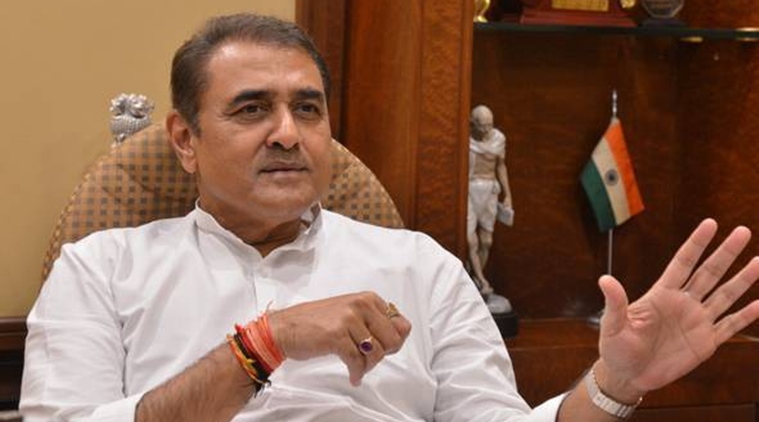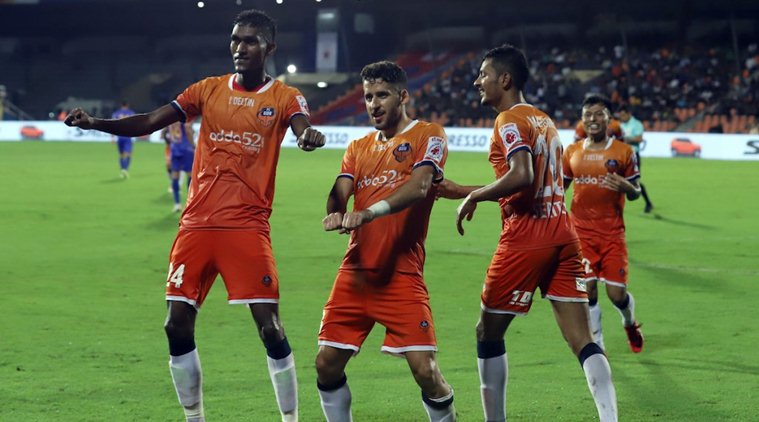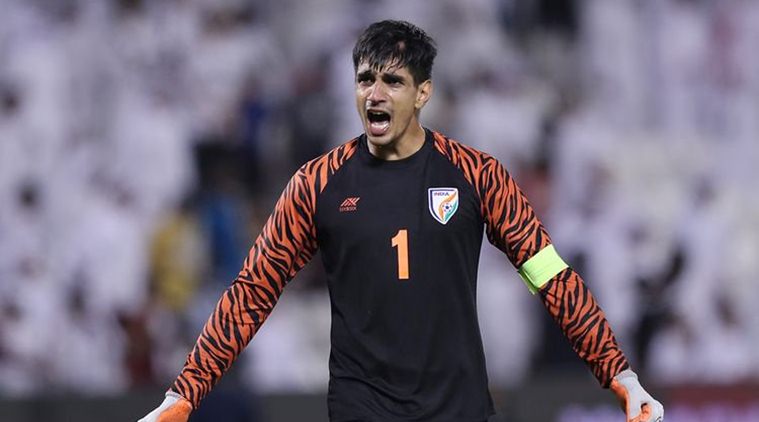 Praful Patel is optimistic about a new-look national team in the next five years. (Source: File Photo)
Praful Patel is optimistic about a new-look national team in the next five years. (Source: File Photo)
In the last decade or so, Indian football has swung from one extreme to another. The team sunk to its lowest-ever world ranking (175, March 2015) before breaking into the top 100; the I-League reaching new corners of the country, like Kashmir and Aizawl, but at the same time, struggling in traditional pockets; and financially, the All India Football Federation has gone from being cash-strapped to being in a relatively better situation.
During this period, Praful Patel has been at the helm of the All India Football Federation (AIFF). In an interview with The Indian Express, the veteran politician talks about heading the federation during this turbulent period, why optics are important for him as well as the governing body and the reason he is optimistic about a new-look national team in the next five years.
Q. During your tenure, India has qualified for the Asian Cup twice, broke into the top-100 of FIFA rankings, hosted the under-17 World Cup, and will be in the AFC Champions League next year. How do you assess this period?
A. Earlier, Indian football was only there (gestures at the top) and nothing below. Everything was an individual effort. You had Sunil Chhetri, Bhaichung Bhutia, the stars. And then you have all these national team players who spurted from here and there. There was no proper ecosystem. We have not reached where we wanted to, and that’ll probably be my only little regret, but judge us from what we have managed. Earlier, there was nothing below. Now we are building from the bottom to the top.
Q. It can be argued that though football’s popularity has exploded, the quality of the domestic game has not improved enough.
A. People watch these EPL, La Liga games and compare that with India. That’s an unfair comparison. When you watch Messi or a Ronaldo playing, and say I-League or ISL isn’t the same level of fun, it’s not fair. How can you suddenly reach that level?
Q. But is it sudden? EPL on TV has been there for decades, and so has the decline of Indian football…
A. Yes, but I can’t be answering for that. In between, Indian football had collapsed. There was no money, the federation couldn’t make ends meet. Today at least, the federation has given a roadmap. People criticise ISL but the league brought in big corporates who invested money, television coverage is better than before, clubs are bringing more people to the stadium. It’s moving in the right direction. Ultimately, the quality of players will also improve.
Q. Critics, however, say that for the sponsorship money you brought in, you ‘sold Indian football’.
A. To whom? Who is saying this? It’s a very myopic approach to a large problem. When you look at the larger picture, has Indian football grown or shrunk? In the larger picture, is Indian football headed in the right direction or not? And what is this ‘sold Indian football’? Does anybody have a solution to undo what has been done in the past? Why should we sell Indian football? I had nothing to do with Indian football. I was only a vice-president and happy to do my thing in Maharashtra. It’s only when Mr. (former AIFF president Priya Ranjan) Dasmunshi got unwell that I got in, otherwise, I was not coming into Indian football.
Q. For someone who wasn’t interested in football governance, you are now in FIFA (a council member).
A. I am happy that at the world stage, first AFC and now FIFA, there is so much optimism outside India that sometimes I feel sad there’s so much pessimism within India. They don’t know anything and they are optimistic. We know everything and we are pessimistic. When I go there, I get very high respect. It’s remarkable.
Q. You used the words ‘growth’ and ‘shrink’. In the last decade, around 20 clubs have either shut shop or scaled down operations. The presence is absolutely zero in the heartland.
A. It’s a big problem. Madhya Pradesh, Rajasthan, Uttar Pradesh and Bihar are not able to come up in Indian football. I can’t help it. There are no local sponsors, the local federations have to take more interest. As a federation, you can’t do everything for every state and say that the whole country will function in the same breath. And on the flip side, see how many more cities and states have been brought into Indian football. Earlier, it was only a Goa, Kolkata affair.
 FC Goa won the ISL League Winners Shield this season, but were knocked out in the semi-finals. (Source: ISL)
FC Goa won the ISL League Winners Shield this season, but were knocked out in the semi-finals. (Source: ISL)
Q. But then Goa has now slipped…
A. I can’t help it. It’s their fault, not ours. How can you say it slid completely? FC Goa have topped the ISL table, have got the (Asian) Champions League slot.
Q. There were plenty more top teams from Goa though.
A. You are absolutely wrong on that count. These are individuals who promoted clubs when club football was an amateur to semi-professional thing. When professional football has come fully into India, individuals like JCT, Mahindra, Dempo or Salgaocar, they don’t have money themselves. They were running their own private clubs. They were not inviting sponsorships or inviting anybody else to participate in their clubs, not giving shares to anybody to invest in a club. How can you use that definition to say clubs have shut down? This has always happened. Today also, clubs will shut down but new players will come also. All these ISL teams are brand new clubs, no? They were never in the footballing system. Big corporates who were never a part of the system are in football. When you talk of these three-four states that don’t have football, there are new cities that have come into football which were not there earlier.
Q. In these new cities, do you think there is actual youth development happening? A lot of teams are taking advantage of ready-made players from the North-East.
A. There is a lot of player development happening all over India. Players from the North-East may be a preferred option right now. But I don’t think that trend will last for long with the number of grassroots programmes and academies across the country – in Bombay, Baroda, and smaller cities. Today, the ratio of youngsters in metro and tier-one cities is 50:50 when it comes to cricket and football.
Q. Still, an informal, community-based coaching system in Mizoram, for example, is churning out a lot more players than the 2,000 licensed coaches, say, in Mumbai… Do we get lost in jargon instead of just letting the youngsters play?
A. We did so much of that! What was Mission 11 Million? We gave all the children a football…
Q. There has been little follow-up to Mission 11 Million, the school-level programme.
A. How can the AIFF do a follow-up? That has to be done at a local level, no? You are talking as if we are in a federal structure. Sitting in AIFF, you are expecting that I monitor whatever is happening from Kashmir to Kanyakumari… that isn’t practically possible. We can give a larger structure, prepare an ecosystem for football. We cannot be a catalyst for every single thing. You have to look at it from AIFF’s point of view. You have to carry people along and build confidence in the system, which is exactly what we are doing. Look at the pipeline of young Indian footballers. We have started baby leagues, different age-group leagues, women’s league. Directionally, we are okay. If you compare to the past, the participation numbers are growing at an exponential pace. Did you have any other academy apart from TFA? The youth programmes that the ISL clubs run, aren’t they being run well?
Q. Does it concern you that all the clubs spend 90 percent of their budget on player salaries and not the development of youth as well as infrastructure?
A. It’s a chicken and egg situation. Football will grow in India if there is an investment. Earlier, we didn’t even spend Rs 100 crore annually on Indian football. Now, there is an investment of Rs 1,000 crore in Indian football. That money is coming from somewhere, no?
Q. Is Rs 1,000 crore an actual figure?
A. Yes, if you add everything, Rs 1,000 crore is spent on Indian football in a year. I am talking about the total ecosystem of Indian football. By that, I mean academies, coaches getting jobs, coaches educations, referees, technical. The whole system was very narrow earlier – whatever the 5-10 clubs spent, along with one TFA, that was it. When I took over, it was not even Rs 100 crore. It may still be a speck. But it’s moving, no? People are investing because we are moving in the right direction.
Q. One of the problems in India is the lack of matches and game time for Indian players. India has one of the shortest leagues in the world.
A. That will increase now. The league will get bigger, the number of matches will increase. The number of games is an issue that we have to solve and we will in two years, in both ISL and I-League.
Q. Do you think the players could have tried their luck abroad? Not necessarily the top European leagues but even in superior Asian countries.
A. Players also were not bold enough to go out and take those opportunities. Everybody thinks of England and big countries but they should have gone into the regional leagues.
Q. Why do you think they weren’t bold enough?
A. The standard of the current team is based on the available talent pool in the country. As the new talent pool which is developing and going through different age-group teams, when they come into the senior team, there will be a larger pool available. The younger ones have gone through better training, better nutrition, mental conditioning and exposure. They have had better formal training from a young age so they will be better equipped. When they play for the national team, the whole level of the national team will improve. They will be playing better football.
 Gurpreet Singh Sandhu, India’s first-choice goalkeeper, played for Norwegian side Stabaek in 2014. He came back to India in 2017 to join Bengaluru FC. (Source: File Photo)
Gurpreet Singh Sandhu, India’s first-choice goalkeeper, played for Norwegian side Stabaek in 2014. He came back to India in 2017 to join Bengaluru FC. (Source: File Photo)
Q. How much does optics matter to the federation? We have seen that when India’s age-group team beat an Italian side, it was blown up. Mission 11 Million was blown up.
A. Optics are important because, at the end of the day, people want to associate with a game that has positivity. We watch EPL and La Liga or World Cup and Champions League and compare that with Indian football. That’s an unfair comparison. If you evaluate Indian football independently, though the national team and ranking might not have changed, when you see the quality of the league, the quality of play, see all these international coaches and players coming, there’s a marked improvement. Football is the most competitive global sport. It takes a whole generation to remove the style and capability of the past and replace it with a brand new style. The process that’s been going on aggressively for the last 5-7 years, when it finishes in the next five years, its impact will be zabardast (great) on the national team.
Q. In terms of optics, would you prefer a 13-match unbeaten run against lower-ranked teams or losing to stronger opponents?
A. I would be happy to lose against a top team rather than win against an underdog. (But) Everybody liked that arrangement. Players liked it, the coach also liked it. So, end of the story. I also did not push because, ultimately, if they are not ready mentally then what’s the point of pushing and taking it beyond a point.
Q. Does it frustrate you, as a federation, that the team has a good result against a team like Qatar and then isn’t able to beat Bangladesh and Afghanistan?
A. Of course, it’s frustrating. That means there’s no consistency. And it’s a sporadic, one-off thing. Nahi hota hai toh mereko bhi kharab lagta hai na (If we don’t play well, I feel bad too).
Q. In 2004, we were told India will qualify for the 2010 World Cup. Later, there was this thing about qualifying for the 2014 World Cup. Then, 2018… 2022… Should we be obsessed qualifying for the World Cup at this stage?
A. I have said we should aspire for the 2026 World Cup because that’s an expanded edition and more teams from Asia will qualify. So we should aspire for qualification. But I’m not obsessed with that alone, or sometimes even with Asian Cup qualification. It’s important but I am not hassled about that. I would rather see a friendly between India and Argentina, or India and Spain, and whatever may be the result in that.
Q. Do you see that happening in the near future?
A. We can always have a friendly. Who stops you from having a friendly? When I am in FIFA, all these things will become reality one day. You will see a lot more interaction between India and the rest of the world. I am not going there for optics. I have gone there for India and support the country’s future endeavours.